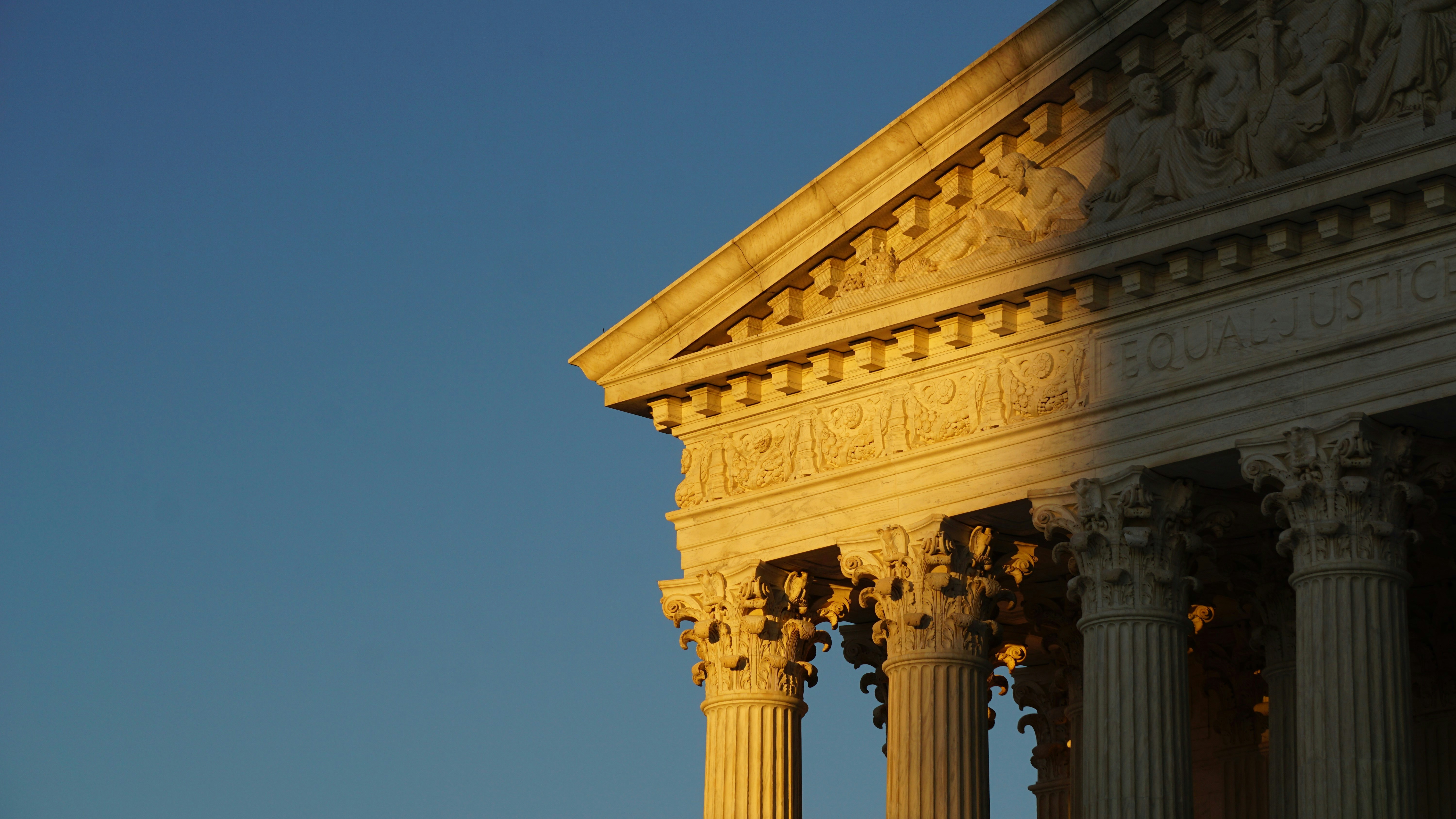The dissent that became a constitutional amendment


In Dissent is a recurring series by Anastasia Boden on Supreme Court dissents that have shaped (or reshaped) our country.
Please note that the views of outside contributors do not reflect the official opinions of SCOTUSblog or its staff.
The next Supreme Court term will cover a centuries-old fight: can states be hauled into federal court when they violate your rights? Not one, but two cases will test the limits of sovereign immunity – a debate that fueled the court’s first major constitutional case and continues to this very day.
I. Just the facts
Before there was Lockheed or Blackwater, there were family-owned shops supplying the Continental Army on credit. During the Revolutionary War, Congress had no power to raise funds directly, so the war effort depended on contributions from unconventional sources: colonial governments, foreign loans, and private industry willing to take promises of future payment.
Robert Farquhar was the recipient of one such IOU. He outfitted a Georgia regiment that was on its way to join George Washington’s army, and while the Georgia Colony promised to pay, Farquhar literally died while waiting for that payment. After the war, the new state of Georgia had other priorities. War debts weren’t popular, and paying out-of-state creditors was even less so.
Years passed, and eventually the executor of Farquhar’s estate, Alexander Chisholm, decided to sue. As a resident of South Carolina, Chisholm brought a lawsuit in federal court based on Article III, Section 2 of the Constitution, which extends federal judicial power to cases “between a State and Citizens of another State.” Georgia countered that it could not be sued in federal court because it had “sovereign immunity.” This was a concept that stemmed from English common law and held that “the king can do no wrong.” The district court agreed, ruling that Georgia didn’t have to defend itself in federal court over its hefty unpaid bill.
In a case that Justice James Wilson called one “of uncommon magnitude,” a five-member Supreme Court disagreed. In four separate, “seriatim” opinions (which was the practice until Justice John Marshall took the bench in the early 1800s), four justices ruled that sovereignty lay not with the states but with the people themselves. As Wilson put it, in the United States “there are citizens, but no subjects.” Even when those citizens surrendered certain powers to their respective states, the people remained supreme. The contrary English principle of the king as sovereign was “a plan of systematic despotism” that Americans had cast off in favor of consent of the governed.
Chief Justice John Jay likewise reasoned that the American people were supreme to the government, and not the other way around. Jay contended that this was evident in the first words of the preamble to the Constitution, “We the people,” and it was nonsensical to say that states could avoid liability to the actual sovereigns in the country. He observed that: “It would be strange indeed that the joint and equal sovereigns of this country should, in the very Constitution by which they professed to establish justice, so far deviate from the plain path of equality and impartiality as to give to the collective citizens of one State a right of suing individual citizens of another State, and yet deny to those citizens a right of suing them.”
Justices William Cushing and John Blair, Jr., for their part, agreed, relying on the fact that the text of Article III explicitly covered controversies between states and citizens of another state.
But Justice James Iredell saw it differently.
II. A short-lived, but influential, dissenter
Given his lack of name recognition and short life, Iredell had an outsized effect on constitutional law. Born in 1751 to an English father and Irish mother, he grew up in England as the eldest of five children. The family’s financial stability collapsed after his father suffered a paralyzing stroke, forcing a teenage Iredell to seek opportunity in America.
At first, Iredell hoped for reconciliation with Britain. But as colonial grievances deepened, so did his convictions. In 1775 he published Principles of an American Whig, a pamphlet that distilled many of the ideals later found in the Declaration of Independence. He argued that happiness is a divine right, wrote that governments failing to secure that happiness relinquish their right to allegiance, and catalogued abuses by the Crown.
By the summer of 1776, he had abandoned any thought of returning to England. And by the time North Carolina held its first ratification convention, Iredell had emerged as a leading advocate for the Constitution. When a Supreme Court seat opened in 1790 after George Washington’s original nominee declined the job, the president tapped Iredell.
In nine years, Iredell wrote only a dozen opinions – but two of them would become well-known. In Chisholm, he alone argued that the Constitution didn’t authorize private citizens to sue a state in federal court without legislation by Congress. And in Calder v. Bull, he became the first justice to reject the use of natural law (or “natural justice”) as a basis for striking down legislation, insisting that judicial review must rest on the Constitution’s text.
The grueling demands of travel while riding circuit (the practice whereby justices sat on circuit courts throughout the country) prevented him from writing any others. He died at age 48 after less than a decade on the bench.
Though Iredell became an ardent supporter of the Revolution, his dissent reflects his early, more monarchial roots. Drawing on English common law, he maintained that a state retains every aspect of sovereignty it has not expressly surrendered. Sovereign immunity, he argued, was one such power – derived from the English common law, where a suit against the King was “a matter of grace, and not [] compulsion.” For Iredell, this meant that despite the text of Article III, federal courts lacked jurisdiction to summon a state at the behest of a citizen of another state unless Congress authorized it through implementing legislation. Because Congress had not done so, tough luck for Chisholm.
III. The 11th Amendment
State leaders were naturally and decidedly in Iredell’s camp. Georgia’s House of Representatives went so far as to threaten the death penalty for anyone who tried to enforce the judgment. Other states, many saddled with Revolutionary War debt, feared an onslaught of creditor lawsuits.
In the years before the enactment of the 17th Amendment, senators were chosen by state legislatures and therefore keenly attuned to their interests. So Congress moved quickly. Less than a year after Chisholm, a congressional senator introduced an amendment to reverse it. The proposal passed both chambers by the required two-thirds vote and sped through the states. By Feb. 7, 1795, three-fourths of them had ratified the 11th Amendment, barring federal jurisdiction in suits “against one of the United States by Citizens of another State” (and by foreign citizens). Chisholm had been undone.
Yet the tension between individual sovereignty and state sovereignty didn’t end in 1795. The scope of the 11th Amendment would continue to be molded over the course of the next two centuries, and it is still being molded today.
The first major question arose nearly a century later in the 1890 case of Hans v. Louisiana, which asked what happens when a citizen sues his or her own state. The 11th Amendment did not address this scenario, yet the Supreme Court ruled that that the answer was obvious: If states are truly sovereign, then states cannot be sued in federal court by their own citizens either.
Though Hans represents an expansion of sovereign immunity, later decisions walked it back by creating a series of exceptions or go-arounds. Ex Parte Young, for example, permitted suits against state officials that ask federal courts to halt ongoing constitutional violations – reasoning that such officials aren’t really working on the state’s behalf. Later, Section 5 of the 14th Amendment empowered Congress to pass laws necessary to enforce that amendment’s protections for liberty and equality, including laws that give federal courts jurisdiction in civil rights cases against states. In Monell v. Department of Social Services, the court made clear that local governments were not covered by the 11th Amendment. And it’s always been true that states can (and sometimes do) waive sovereign immunity.
But in the 1990s, the court reinvigorated sovereign immunity. In Seminole Tribe v. Florida, it held that Congress cannot use Article I powers, like the commerce clause, to authorize private suits against states in federal court. In Alden v. Maine, it ruled that the principles of the 11th Amendment extended immunity to certain suits against states in their own state courts. And in Franchise Tax Board v. Hyatt, it recognized “interstate sovereign immunity,” meaning that states cannot be sued in other state courts.
Together, these decisions frame sovereign immunity as a structural principle embedded in the Constitution – cementing Iredell’s dissent as a foundation of modern doctrine.
IV. “No rights without remedies”
Two upcoming cases show how far sovereign immunity can sometimes reach, and they will test how far the Supreme Court will let it go.
In GEO Group v. Menocal, a private contractor for ICE is claiming derivative sovereign immunity for allegedly forcing detainees to perform unpaid labor under the threat of punishment, including solitary confinement. The plaintiffs say this is illegal forced labor. The company says the plaintiffs are only suing it as a workaround for sovereign immunity, and that because it was acting for the government, it should be shielded. The district court denied sovereign immunity and the U.S. Court of Appeals for the 10th Circuit ruled that the parties have to see the case through before appealing that denial.
In Galette v. New Jersey Transit Corp., the question is whether New Jersey’s immunity can protect its transit authority from being sued in a different state’s court. A man who was injured when a transit authority vehicle hit his car sued in Pennsylvania, where his car was hit, but the state supreme court said New Jersey’s transit authority was an arm of the state entitled to interstate sovereign immunity.
As these two cases show, sovereign immunity allows the government to avoid liability in federal court even when a litigant alleges it has committed serious harm. The court’s decisions this term will thus be the latest chapter in a centuries-long debate over where sovereignty truly lies – whether it rests with the individuals who form the nation or the government meant to serve them.
Posted in In Dissent, Recurring Columns
Cases: Galette v. New Jersey Transit Corporation, The GEO Group, Inc. v. Menocal